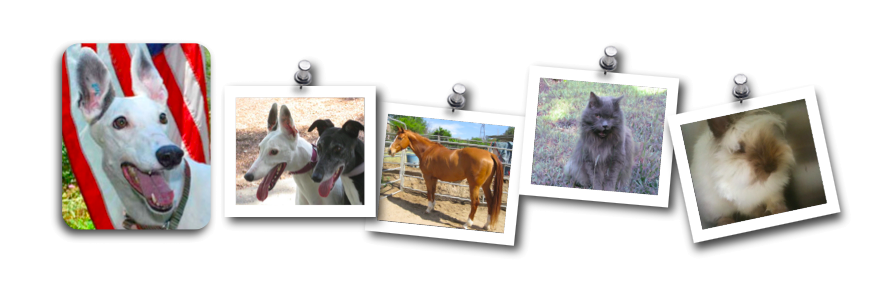By sharing our concerns and successes, we all benefit.
Animals live to serve us one way or another, so knowing how to take care of them is critical for our mutual well being.
Wednesday, June 23, 2010
Dangers of raw pet foods: Quality
In order to make their foods anywhere near affordable, RF pet food producers must search the ingredient market for items that can carry the name of real food but may in fact be only a hollow shell of the real thing. Inferior meat and organ ingredients, heat processed grains and vegetable riffraff (for example “broccoli” on a label may really be broccoli stems – like eating a branch from an apple tree rather than the apple) are used because they are of low cost. That is not to say the marketing brochures and labels do not make it appear as though the brand is not a true gourmet meal. If one reviews the various labels it becomes clear that the race is on to see who can put the fanciest and most exotic ingredients on labels ... as if that is the road to pet health. (It is not.) In a brief ingredient survey this is what we found:
Every manner of “pureed” vegetable Organic beef, rabbit, chicken, turkey, goat, lamb, duck, pork Organic honey Organic papaya, persimmons, blueberries, oranges, apples, pears Organic yogurt Organic alfalfa, millet, quinoa and barley sprouts Wheat grass Nettles Bok choy Cultured kefir Cod liver oil Capsicum Watermelon
The reader is challenged to go to the store and total up the cost of such ingredients. Some of the organic ingredients can cost over $15 per pound. But the RF pet diets containing them can retail for as little as $2-4 per pound. Take away margins for distributors and retail stores and the producer is selling them wholesale for close to a dollar per pound. Now on top of the cost of ingredients is the production, advertising, packaging, freezing and in some cases a sales force making six figures. Something most certainly does not add up. The only thing that can be missing is true ingredient quality. But how can the label say these expensive ingredients are in the food? All the RF pet food producer needs to do is put in pinches of the expensive ingredients just to say they are there.
The only economic hope for a RF pet food producer is to create the perception of “value added.” They simply could not put the costly ingredients in the food to any degree and make a profit for themselves and all the middlemen up and down the chain. The price they would have to charge would be ridiculous. In effect, in order to be successful, producers must become accomplished at propaganda, not health and nutrition.
Consumers interested in cutting through to the truth do themselves and their pets a service by going to the grocery store with a list of the ingredients ostensibly in a RF pet diet. Although some RF diets in the lower price range appear to not be attempting to mislead, consumers should do the math comparing the exotic ingredients in RF pet foods to the prices for the real thing in the store and decide for themselves whether either value or honesty resides in RF pet products.
Subscribe to:
Post Comments (Atom)
Blog Archive
-
▼
2010
(228)
-
▼
June
(56)
-
▼
Jun 23
(16)
- Dangers of raw pet foods: A Better Alternative
- Dangers of raw pet foods: Environmental
- Dangers of raw pet foods: Packaging
- Dangers of raw pet foods: Parasites Are Ignored
- Dangers of raw pet foods: Quality
- Dangers of raw pet foods: Temperature And Time Are...
- Mycotoxins Go Undetected
- Dangers of raw pet foods: Microwave Thawing Dangers
- Dangers of raw pet foods: Supply Chain Time Dangers
- Dangers of raw pet foods: Mold and Mycotoxins in R...
- Economics
- Undetected Freeze-Thaw Cycles
- The High Risk In Thawing
- Frozen Pet Foods Can Lead To Acidemia
- Frozen Pet Products Are Not Inert To Degradation
- Dangers of raw pet foods: Freezer Burn Indicates A...
-
▼
Jun 23
(16)
-
▼
June
(56)

No comments:
Post a Comment